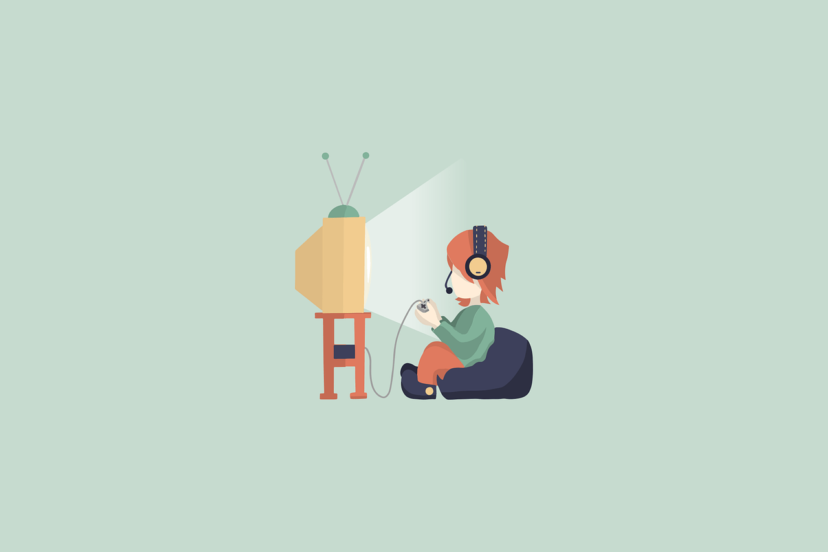The Key Elements of a Good Game Design Document
In “The Key Elements of a Good Game Design Document,” we delve into the essential components that make up an effective game design document. By outlining the core aspects such as the game’s concept, mechanics, story, and user experience, we offer a comprehensive guide to help both novice and seasoned game developers create a blueprint that’s thorough, clear, and actionable. This will not only streamline the development process but also ensure that all team members are aligned and working towards the same vision. Have you ever wondered what the key elements of a good game design document are? As game developers, our goal is to create engaging and immersive experiences for players. A well-crafted game design document (GDD) serves as a blueprint for this journey, ensuring everyone on the team is aligned and focused on the same vision.

What is a Game Design Document (GDD)?
A Game Design Document is a detailed overview of your game’s design, concepts, mechanics, story, characters, and many other components. Think of it as a comprehensive guidebook that helps developers, artists, designers, and other team members understand the game’s vision and direction. The GDD is instrumental in maintaining consistency, managing scope, and ensuring that everyone contributes harmoniously towards the final product.
Why is a Game Design Document Important?
Before we dive into the key elements, let’s discuss why having a GDD is crucial. It serves multiple purposes, including:
- Clarifying Vision: A GDD helps articulate the overarching vision of the game, ensuring every team member understands the big picture.
- Communication Tool: It serves as a central hub for communication among team members, reducing misunderstandings and misinterpretations.
- Time Saver: With a GDD, we can anticipate potential design issues and address them before they become significant problems.
- Reference Guide: It acts as a detailed reference guide throughout the development cycle, helping to track progress and maintain the original vision.
Key Elements of a Good GDD
Several crucial components make up an effective GDD. Each element helps to paint a fuller picture of what the final game will look like and how it will function.
1. Game Overview
The game overview is the first section that gives readers a snapshot of what the game is about. This helps set the stage for more detailed sections later on.
Items to include:
- Game Title: The working title of your game.
- Genre: The category or type of game (e.g., RPG, FPS, puzzle).
- Platform: The intended platform(s) for the game (e.g., PC, console, mobile).
- Target Audience: The demographics you are catering to.
2. Game Concept
This section is where we present the core idea behind the game. It should be clear and concise, expressing what makes the game unique.
Items to include:
- Concept Statement: A brief paragraph that encapsulates the game’s main idea.
- Unique Selling Points (USPs): Key features or aspects that set the game apart from others.
- Similar Games: References to existing games that share similarities.
3. Story and Characters
The narrative creates emotional engagement and deeply influences player experience. Detail the game’s storyline and characters here.
Story Elements:
- Setting: Describe the world or environment where the game takes place.
- Plot: Outline the main events and conflict.
- Backstory: Provide context or history pertinent to understanding the current events in the game.
Character Elements:
- Main Characters: Describe the protagonist(s) along with their motives and personalities.
- Supporting Characters: Outline side characters and their roles in the story.
- Antagonists: Detail the main adversaries or challenges faced by the protagonist.
4. Gameplay Mechanics
Gameplay mechanics define how players interact with the game. It includes rules and systems that make up the core gameplay loop.
Key Mechanics:
- Core Mechanics: The base actions the player can perform (e.g., jumping, shooting, solving puzzles).
- Progression: How players advance through the game (e.g., levels, quests).
- Objectives: Goals players must achieve (e.g., reaching a destination, collecting items).
- Rewards: What the player gains (e.g., points, achievements) for completing objectives.
- Failure Conditions: What constitutes a failure (e.g., losing lives, failing a mission).
5. Level Design
Levels are the spaces within the game where interactions occur. Good level design ensures a challenging yet fair environment for players.
Level Design Elements:
- Level Layouts: Diagrams or maps of each level, showing the placement of obstacles, enemies, and goals.
- Themes: Visual and thematic aspects of different levels.
- Difficulty Curve: How the game’s difficulty progresses from level to level.
6. User Interface (UI) and User Experience (UX)
The UI and UX determine how players interact with the game and perceive its design.
UI Elements:
- HUD (Heads-Up Display): Information displayed on the screen during gameplay (e.g., health bars, score, maps).
- Menus: Layouts of all menu screens (e.g., main menu, settings).
- Controls: Configuration of the controls for different platforms.
UX Considerations:
- Onboarding: How new players are introduced to the game’s mechanics.
- Feedback: Visual, auditory, and haptic feedback provided to players to indicate their actions.
- Accessibility: Features that make the game playable for people with disabilities.
7. Audio
Audio enhances the immersive experience, conveying mood and guiding players through the game.
Audio Elements:
- Sound Effects (SFX): Specific sounds tied to in-game actions (e.g., footsteps, explosions).
- Music: Background music that sets the tone for different scenes or levels.
- Voice Acting: Dialogues spoken by characters, if applicable.
8. Art and Visual Style
Describing the visual style helps artists and designers maintain a consistent aesthetic throughout development.
Art Elements:
- Visual Style: The overall look and feel (e.g., cartoonish, realistic).
- Character Designs: Concept art and descriptions of major characters.
- Environment Designs: Concept art and descriptions of major environments.
- UI Art: Visuals for HUD elements, icons, and menus.
9. Technical Details
This section covers the technology and tools needed for development, which helps engineers and technical artists plan their work.
Technical Elements:
- Engine: The game engine being used (e.g., Unity, Unreal Engine).
- Platforms: Specific requirements and features for each platform.
- Tools: Software and tools for asset creation (e.g., Photoshop, 3ds Max).
- Performance Metrics: Target frame rates, load times, and other performance benchmarks.
10. Marketing and Monetization
To ensure the game’s success, planning for marketing and monetization is important.
Marketing Strategies:
- Branding: Logos, taglines, and overall brand voice.
- Channels: Social media, websites, and other platforms for promotion.
- Press Kit: Assets such as screenshots, trailers, and descriptions for press releases.
Monetization Models:
- Pricing: Whether the game is free-to-play, premium, or has a hybrid model.
- In-App Purchases (IAPs): Items or features players can buy within the game.
- Advertisements: Integration of ads and their placement within the game.
Summary Table of Key Elements
To make it easier to visualize, here is a summary table of the key elements of a GDD:
| Element | Details |
|---|---|
| Game Overview | Title, Genre, Platform, Target Audience |
| Game Concept | Concept Statement, Unique Selling Points, Similar Games |
| Story and Characters | Setting, Plot, Backstory, Main Characters, Supporting Characters, Antagonists |
| Gameplay Mechanics | Core Mechanics, Progression, Objectives, Rewards, Failure Conditions |
| Level Design | Level Layouts, Themes, Difficulty Curve |
| UI and UX | HUD, Menus, Controls, Onboarding, Feedback, Accessibility |
| Audio | Sound Effects, Music, Voice Acting |
| Art and Visual Style | Visual Style, Character Designs, Environment Designs, UI Art |
| Technical Details | Engine, Platforms, Tools, Performance Metrics |
| Marketing and Monetization | Branding, Channels, Press Kit, Pricing, In-App Purchases, Advertisements |
Crafting a Comprehensive GDD
Now that we know the key elements, how do we go about crafting a comprehensive GDD? Here are some additional tips and best practices:
Collaborate
A GDD should be a collaborative effort involving all team members. Designers, artists, engineers, and writers should contribute their expertise to create a more rounded and detailed document.
Be Detailed but Flexible
While the GDD should be detailed, it’s also important to remain flexible. Game development is an iterative process, and the document should allow for changes and updates as the project evolves.
Use Visuals
Where possible, include visuals such as concept art, wireframes, and diagrams. These help convey ideas more clearly than words alone.
Keep It Organized
An organized GDD is easier to navigate and reference. Use headings, bullet points, and tables to structure the information logically.
Regularly Update
The GDD is a living document that should be regularly updated to reflect changes and new insights. Keep track of versions and ensure all team members have access to the latest iteration.

Example Game Design Document (GDD) Outline
Let’s look at a simplified outline of what a GDD might look like for a hypothetical game:
- Game Overview
- Title: “Fantasy Quest”
- Genre: Action RPG
- Platform: PC, Console
- Target Audience: Teens and adults, RPG fans
- Game Concept
- Concept Statement: “Embark on a mystical adventure to save the kingdom from an ancient evil.”
- Unique Selling Points: Open world, crafting system, dynamic weather.
- Similar Games: The Legend of Zelda, Skyrim.
- Story and Characters
- Setting: Medieval fantasy world.
- Plot: The player must find and destroy a dark artifact to save the kingdom.
- Backstory: A war-torn kingdom with a rich history.
- Main Characters: Hero, Mentor, Villain.
- Supporting Characters: Townsfolk, Merchants, Allies.
- Antagonists: Dark Sorcerer, Monster Minions.
- Gameplay Mechanics
- Core Mechanics: Combat, Exploration, Crafting.
- Progression: Skill trees, Experience points.
- Objectives: Main quests, Side quests, Collectibles.
- Rewards: Equipment, Gold, Experience.
- Failure Conditions: Death, Mission failure.
- Level Design
- Level Layouts: Open-world map with various dungeons and towns.
- Themes: Forests, Mountains, Caves.
- Difficulty Curve: Gradually increasing enemy difficulty and puzzle complexity.
- UI and UX
- HUD: Health bar, Mini map, Stamina.
- Menus: Inventory, Skills, Settings.
- Controls: Keyboard/mouse for PC, Gamepad for consoles.
- Onboarding: Tutorial level, Tooltips.
- Feedback: Vibrations, Sound cues.
- Accessibility: Colorblind mode, Subtitles.
- Audio
- Sound Effects: Sword slashes, Footsteps, Spell cast.
- Music: Orchestral soundtrack with dynamic intensity.
- Voice Acting: Full voice acting for main characters.
- Art and Visual Style
- Visual Style: Semi-realistic with a bright, fantasy palette.
- Character Designs: Hero in armor, magical creatures.
- Environment Designs: Lush forests, Mystical ruins.
- UI Art: Medieval-themed icons and menus.
- Technical Details
- Engine: Unreal Engine 4.
- Platforms: PC (Steam), PlayStation, Xbox.
- Tools: Maya for 3D modeling, Substance Painter for texturing.
- Performance Metrics: 60 FPS target, Quick load times.
- Marketing and Monetization
- Branding: Logo design, Tagline “Unleash the Hero Within.”
- Channels: Social media (Twitter, Instagram), Official website.
- Press Kit: High-resolution screenshots, Teaser trailer.
- Pricing: $49.99 premium game.
- In-App Purchases: Cosmetic skins.
- Advertisements: Trailers on YouTube, Sponsorships with influencers.
Conclusion
Creating a good game design document is an integral part of the game development process. It ensures that every team member is on the same page and has a clear understanding of the game’s vision. By including detailed elements such as the game overview, concept, story, mechanics, level design, UI/UX, audio, art, technical details, and marketing plans, we set the stage for a successful and smooth development journey.
Remember, a well-crafted GDD is not set in stone. It should evolve as the game development progresses, incorporating feedback and new ideas. With diligent collaboration, detailed documentation, and continuous updates, a good GDD can significantly enhance the quality and coherence of the final game. Happy developing!


